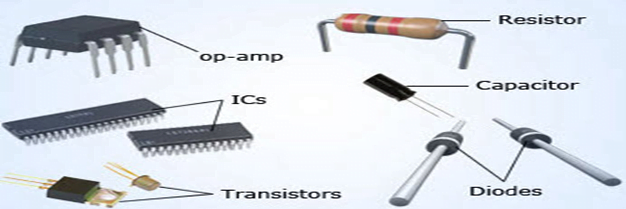Governance, Science and Technology
Context: Emphasising on the need for India to build semiconductor manufacturing capacity to cater to its organic demand, the country could face competition from regions such as the US and Europe as they deleverage dependence on Taiwan — the world’s largest semiconductor country.
In this context let’s discuss semiconductors in detail:
What is Semiconductor?
- It is a material product usually composed of silicon, which conducts electricity more than an insulator, such as glass, but less than a pure conductor, such as copper or aluminium.
- Semiconductors are critical technological components for emerging technologies viz. artificial intelligence (AI) and internet of things applications, 5G communications, cloud computing, automation, electric vehicles, with a wide coverage of applications from basic consumable electronic gadgets and automobiles to areas of strategic operations.

Opportunities for India:
- India’s consumption of semiconductors is expected to cross $80 billion by 2026 and is expected to reach $110 billion by 2030.
- India has exceptional semiconductor design talent pool, accounting for up to 20% of the world’s semiconductor design engineers.
- The current decade presents a unique opportunity to India. Companies are looking to diversify their supply chain and for alternatives to their bases in China.
- The establishment of the value chain for semiconductors would ensure a multiplier effect on the entire economy.
- The semiconductor manufacturing and testing bases are heavily concentrated in East Asia, the Act East policy provides an opportunity to connect and strengthen ties with key players in the region.
Challenges before semiconductor industry:
- Huge requirement of Investment
- Multi billions of dollars are needed to set up a fab manufacturing unit.
- The conversion of raw water to water of ultrahigh purity is thus a significant and costly activity for all semiconductor fabs.
- Water and Electrical supply
- Semiconductor manufacturing consumes large quantities of water for a variety of purposes ranging from equipment cooling to wafer surface cleaning.
- Technological competitiveness
- The making of a semiconductor chip involves some technological skill .
- Inadequate logistics and absence of proper waste
- Inadequate logistics and absence of proper waste disposal have further exacerbated the poor state of its production.
- Uninterrupted quality electricity supplies.
- Covid-19
- The trigger point was the beginning of the Covid-19 pandemic and the subsequent lockdowns across the world that forced shut crucial chip-making facilities in countries including Japan, South Korea, China, and the US.
- The chip shortages due to Covid-19 have hit automakers with a revenue loss of $110 bn in 2021.
- Russia-Ukraine conflict
- The Russia-Ukraine conflict and its implications for raw material supplies for the semiconductor value chain has also poised chipmakers to invest in strengthening the semiconductor supply chain.
Initiatives taken by India:
- Semicon India programme
- It provides $10 bn fiscal support and other non-fiscal measures
- The Semicon India Program aims to provide attractive incentive support to companies / consortia that are engaged in Silicon Semiconductor Fabs, Display Fabs, Compound Semiconductors / Silicon Photonics / Sensors (including MEMS) Fabs, Semiconductor Packaging (ATMP / OSAT) and Semiconductor Design.
- India Semiconductor Mission:
- It has been set up as an Independent Business Division within Digital India Corporation having administrative and financial autonomy to formulate and drive India’s long-term strategies for developing semiconductors and display manufacturing facilities and semiconductor design ecosystem.
- Production Linked Incentive scheme
- The government also recently announced the PLI and DLI schemes as major steps towards building a semiconductor ecosystem in the country.
- The recent Cabinet approval with an outlay of Rs.76,000 crore spread over a period of six years for the development of semiconductors and display manufacturing ecosystem is expected to be a shot in the arm.
- This will claim to attract Rs. 1.7 lakh crore private investment in India.
Way Forward:
- Semicon diplomacy
- India must seize opportunity and become an attractive alternative destination for semiconductor manufacturing.
- The way ahead is conceptualising a semicon diplomacy action plan.
- Semicon diplomacy is pivotal to India’s Act East Policy, which aims to build resilient ties in the Asia Pacific region.
- It can be leveraged by increasing multilateral and bilateral cooperation and Quad has immense potential in this regard.
- Development of Policies
- The semiconductor value chain is interrelated and linked with several industries; governments must develop policies that address all the crucial characteristics in the long run.
- Government policies should also focus on assuring and securing access to foreign technology suppliers through trade and foreign policy to ensure a global level of collaboration.
Source: Indian Express
Previous Year Question
Q.1) Which one of the following is the context in which the term “qubit” is mentioned? (2022)
- Cloud Services
- Quantum Computing
- Visible Light Communication Technologies
- Wireless Communication Technologies
Q.2) Consider the following communication technologies: (2022)
- Closed-circuit Television
- Radio Frequency Identification
- Wireless Local Area Network
Which of the above are considered of the Short-Range devices/technologies?
- 1 and 2 only.
- 2 and 3 only
- 1 and 3 only
- 1, 2 and 3











